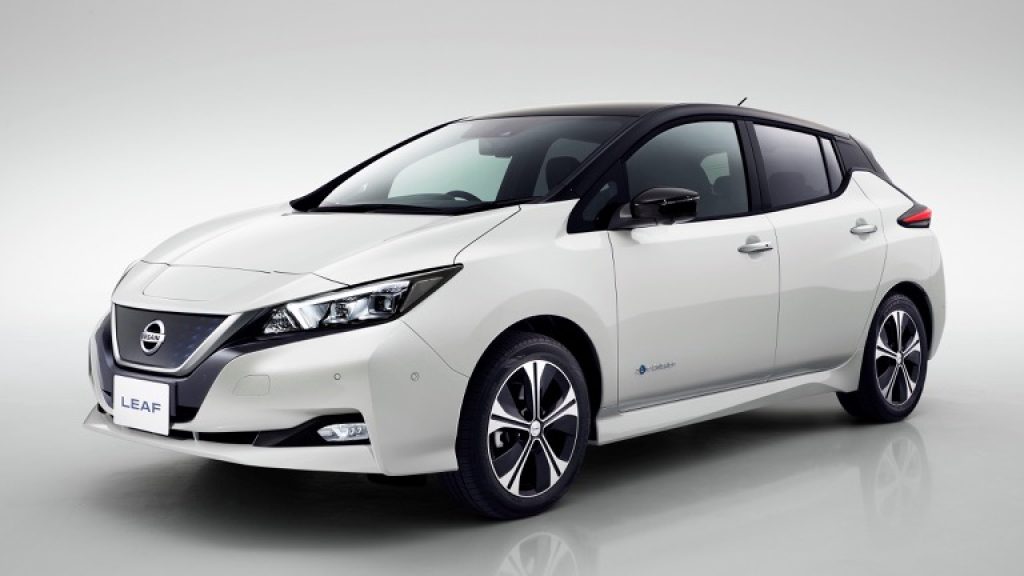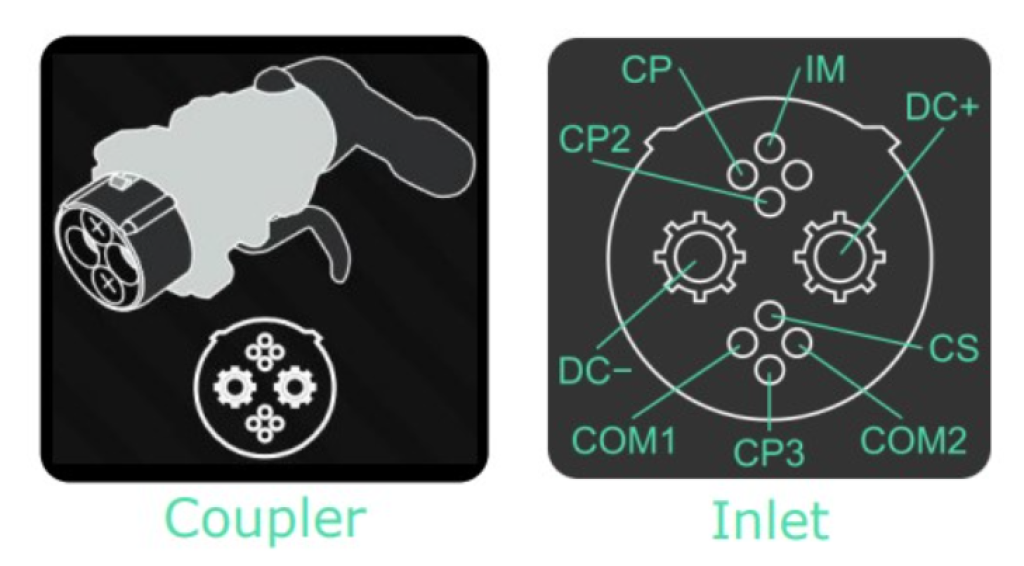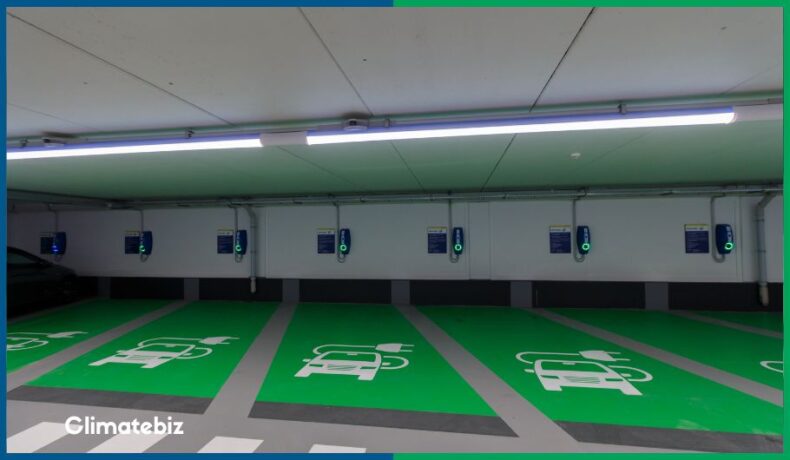Vehicle-to-grid (V2G) technology allows electric vehicles (EVs) to channel electricity back to the grid.
This technology uses chargers that connect EVs and their batteries to the grid via a bi-directional power flow, providing your vehicle with clean, renewable energy. As of 2022, several major automakers, such as Nissan, are working on developing V2G-compatible EVs. To delve deeper into this evolving field, individuals may consider enrolling in an Electrical Vehicle Technology Course of Intellipaat to gain comprehensive knowledge about the advancements and applications in electric vehicle technology.
In this post, we look at the EVs you can plug into a V2G charger. Additionally, we discuss the benefits of V2G charging and how it can help you save money.
Table of Contents
What is V2G?
Vehicle-to-grid technology refers to an electric vehicle’s ability to interact with and channel power back to the grid.
This connection allows EVs to act as mobile energy storage devices, providing a valuable resource for utilities as they work to balance supply and demand on the grid.
To take advantage of V2G technology, an EV must have several advanced features, including:
- Smart charging.
- Bi-directional chargers.
- The ability to communicate seamlessly with the grid.
Additionally, V2G compatible cars must hold a large amount of energy to make meaningful contributions back to the grid.
An overview of V2G-enabled vehicles
Three key features determine an EVs ability to be V2G compatible:
- Power supply: The grid must be able to access this with ease.
- Reliable communication system: This allows the grid to track and access the vehicle’s power.
- High-precision measurement system: This accurately tracks the power being sent.
A typical electric grid system involves a one-way flow of electricity. However, in a smart grid system, electricity flows between the generators and the grid and from vehicles back to the grid via two-way connections.

This is possible thanks to mobile networks or internet connections, which allow the Independent System Operator (ISO) to send requests directly to vehicles that have opted in to receive these requests.
Additionally, the ISO may contact fleet operators controlling large parking lots with significant numbers of electric vehicles, who then provide power back to the grid.
Which cars are V2G compatible?
As of 2022, only the Nissan Leaf possesses V2G technology, which is slowly changing.
There are, however other EVs that offer similar technology. They are:
- Vehicle-to-home (V2H): Ford F-150 Lightning.
- Vehicle-to-load: Hyundai Ioniq 5, Kia EV6, and the Mitsubishi Outlander PHEV.
Currently, the Nissan Leaf ZE1 is the most popular V2G-compatible car available. It comes with a standard CHAdeMO EV charging cable that allows it to link to the grid.
Now, let’s take a closer look at the V2G capability of the Nissan Leaf ZE1.
Nissan Leaf ZE1

The Nissan Leaf ZE1 uses advanced battery technology to store energy from renewable sources like solar and wind power.
With its 40kWh, 260V battery pack, and powerful electric motor, this second-generation EV delivers efficient performance, charging quickly through either a 6.6kW plug or a 50kW CHAdeMO plug.
Despite its relatively large size, the weight of the battery is only around 661 lbs (300 kg), making it efficient and cost-effective.

Source: Nissan
The Nissan Leaf ZE1 allows you to discharge energy via the CHAdeMO port at a capacity limited by the charger. To communicate with the charger, the Nissan Leaf uses an Open Charge Point Protocol (OCPP 1.6), which enables it to read data and adjust power settings as necessary.
V2G efficiency tests
The bidirectional charger lets you easily control the power going in or out of your car. This ranges from -10kW (for discharging) to 6.6kW (for charging).
A series of efficiency tests study the energy losses associated with V2G. These tests involve fully charging and then discharging the Nissan Leaf’s battery.
Several key factors influence energy losses, including state of charge, temperature, and charge rate. The results help inform strategies for minimizing energy consumption in V2G systems.
Test outcome
The charging and discharging efficiency of the Nissan Leaf’s battery increases with increasing test power setpoint. The charging and discharging efficiencies are approximately 90%, while the round-trip efficiency is roughly 80%.
Lower currents harm the efficiency of battery charging and discharging, highlighting the importance of optimal current management for efficient EV battery performance.
The charger strongly influences efficiency and varies widely depending on factors such as equipment configuration and power levels. Each round-trip cycle loses 8kWh, enough power to run an average house daily.
While there is room for improvement, this efficiency level is respectable. It indicates that using the Nissan Leaf’s battery for storing renewable energy sources can be a viable option for many applications.
What are the benefits of V2G cars?
V2G cars contain a bidirectional charging system that allows them to charge from the grid and discharge to the grid. As such, they provide several benefits to both individuals and society.
- Savings: V2G cars can help you save money on your electric bill by channeling energy back to the grid during high demand when electricity prices are highest.
- Grid stability: These cars help improve grid stability and resiliency by providing energy during peak demand. They also provide energy when there is a sudden drop in power generation from renewable sources.
- Reduced emissions: This technology reduces emissions from the transportation sector by displacing fossil fuel-powered vehicles.
How you can use V2G to increase the value of your investment
EVs come with a high upfront cost. V2G can help offset this by providing a source of additional income.
As previously mentioned, V2G can also help stabilize the grid during peak demand. You could take advantage of this by selling electricity back to the grid during peak hours.
Let’s not forget that V2G can help improve air quality by reducing harmful emissions. By selling your electricity back to the grid, you’ll help make the grid cleaner and more efficient.
How to choose a V2G-compatible EV
Here are some factors to consider when choosing a V2G-compatible EV:
The amount of energy you need to store
V2G-compatible EVs come in a variety of sizes. The models vary from a smaller car that can store 5kWh of energy to larger models that can store up to 30kWh.
Ultimately, it’s important to choose a model that meets your needs.
Type of batteries
V2G technology works with both lithium-ion and lead-acid batteries. Some V2G-compatible EVs come with one type of battery, while others allow you to choose between the two. Consider your budget and your needs when making a decision.
The price
V2G-compatible EVs can be more expensive than traditional EVs. Factor this into your budget when making your purchase.
Your home’s electrical system
V2G technology requires a bidirectional charger installed by a qualified electrician. Be sure to have this system in place before you purchase your V2G-compatible EV.
Challenges with V2G technology
This concept can potentially revolutionize how we power our homes and businesses. However, we must overcome several challenges before widespread adoption of this technology is possible.
First, the V2G cars need a developed infrastructure. This includes creating charging stations to accommodate V2G cars.
Second, V2G cars need to be more affordable. Currently, batteries and other V2G-related technologies are prohibitively expensive for many consumers.
Finally, V2G cars need to be more reliable. V2G cars will play a significant role in powering our homes and businesses. Therefore, they must be able to handle the demands of daily use.
Overcoming these challenges will be essential if V2G is going to realize its full potential.
Final thoughts
V2G cars have the potential to provide several benefits for individuals and society as a whole. They can help you:
- Savings: Save on your electricity bill by channeling energy back to the grid during times of high demand.
- Stability: Improving grid stability and resiliency.
- Emissions: Reducing emissions from transportation.
That said, while this technology can revolutionize how we power our homes and businesses, there are several challenges we need to overcome for this concept to become mainstream.
- Lack of infrastructure: This includes developing charging stations to accommodate these vehicles and working with utilities to create a market for their generated energy.
- Affordability: V2G cars are typically more expensive than traditional vehicles, making them out of reach for many consumers.
- Reliability: V2G cars must be more reliable to handle the demands of daily use.
To overcome these challenges and fully realize the benefits of this technology, we’ll need to invest time and resources into researching and developing new solutions.
But in the end, it could be worth it, as V2G has the potential to help us reduce our reliance on fossil fuels and improve sustainability for future generations.

